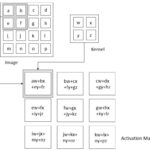Removable partial dentures (RPDs) are a common treatment option for partially edentulous patients. This article, drawing from the revised and augmented content of “A Colour Atlas of Removable Partial Dentures“, Davenport, Basker, Heath and Ralph, aims to provide a clinical guide focusing on the key aspects of RPD treatment, particularly aligning with modern understanding and emphasis on oral health. This guide highlights essential elements from need assessment to design principles and initial prosthetic treatment for effective RPD therapy.
The following topics offer a structured overview of crucial considerations in RPD treatment:
- Need and demand for treatment, particularly for elderly patients.
- The risk versus benefit equation of RPDs.
- Effective communication between the dentist and the dental technician.
- Surveying techniques.
- A systematic approach to RPD design.
- Retention mechanisms.
- Bracing and reciprocation principles.
- Clasp design principles.
- Indirect retention strategies.
- Connectors in RPD design.
- Initial prosthetic treatment.
- Tooth preparation.
Prioritizing Oral Health in RPD Design
While mechanical requirements are a factor, prioritizing oral health is paramount in RPD design. Current scientific data is limited for RPD design. But, most specialists believe hygienic designs are critical for the oral health. This belief emphasizes that maintaining the patient’s oral health should be the main focus in RPD design.
Need vs. Demand for RPD Treatment
It’s vital to distinguish between the need and demand for RPD treatment. Overtreatment can be detrimental, and this section explores appropriate management options for partially dentate patients, with a special consideration for the elderly, addressing demographic shifts and the significance of retaining teeth into old age.
Dentist-Technician Communication
Effective communication between dentist and dental technician is a cornerstone of competent RPD treatment. Open communication ensures that the RPD meets the patient’s specific needs and the dentist’s treatment plan. This guide addresses common communication shortcomings and strategies to overcome them, ensuring clear instructions and optimal collaboration.
Surveying Techniques for RPD Design
The process of surveying is described and the reader is taken through a logical sequence for developing the final design. Proper surveying identifies the path of insertion, guiding plane locations, and areas of interference.
Principles of Clasp Design
The principles of clasp design are explained to ensure proper retention, support, and stability of the RPD. This section, derived from a computerised knowledge-based system[1] for RPD design, offers design rules developed with input from prosthodontic specialists. These guidelines are presented to encourage interactive learning, allowing readers to compare their opinions with expert consensus and consider various design considerations.
Achieving Optimal Oral Health Before RPD Provision
The series concludes by describing procedures for creating the best possible oral environment for the provision of RPDs. Achieving optimal oral health before RPD placement is crucial for long-term success. This involves addressing any existing dental issues, such as caries, periodontal disease, and mucosal lesions, to create a healthy foundation for the RPD.
Conclusion
This clinical guide provides a concise yet comprehensive overview of removable partial dentures, emphasizing the importance of oral health, effective communication, and evidence-based design principles. By understanding the key aspects of RPD treatment, dental professionals can deliver optimal care and improve the quality of life for their patients. A focus on detailed assessment, careful planning, and skilled execution is critical to successful RPD therapy.
